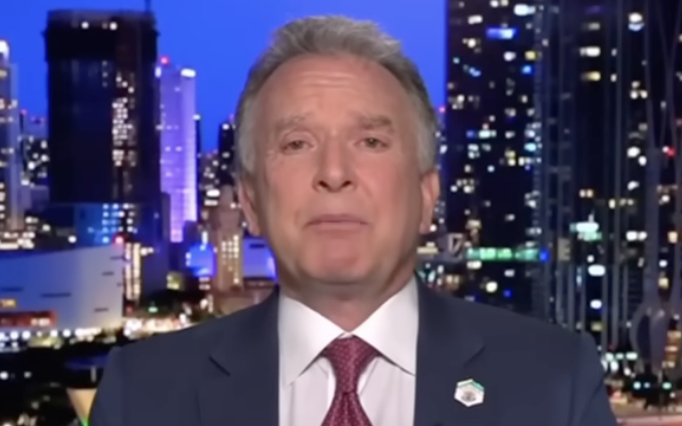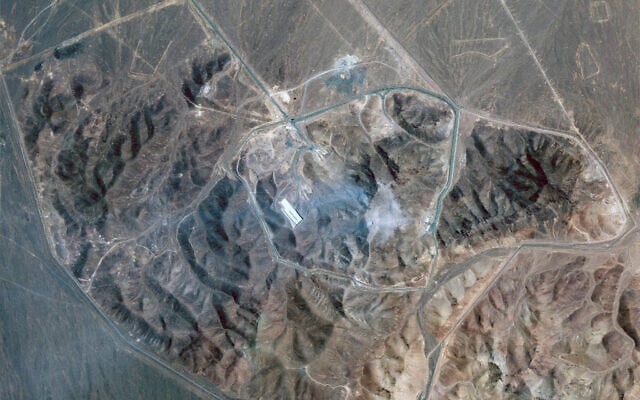



White House envoy Steve Witkoff, in an interview aired early Wednesday Israel time, said the US and Iran are already in preliminary discussions about resuming negotiations over the Islamic Republic’s nuclear program.
Witkoff said the US and Iran are engaged in talks both directly and through intermediaries about getting back to the table, after Israeli and US strikes against Iranian nuclear facilities ended Tuesday in a ceasefire that US President Donald Trump helped mediate.
“The conversations are promising. We’re hopeful,” Witkoff told Fox News’ Laura Ingraham. “Now it’s time for us to sit down with the Iranians and get to a comprehensive peace deal, and I’m very confident that we’re going to achieve that.”
The Trump envoy said the American position is that Iran must not resume enriching uranium at all — a position that the White House vacillated on during previous talks with Iran, led by Witkoff, over the two months prior to Israel’s attack on the Islamic Republic’s nuclear and ballistic missile programs that began earlier this month.
Witkoff also doubled down on the administration’s assessment that the strikes on Iran’s nuclear facilities at Natanz, Isfahan, and Fordo completely eliminated the Islamic Republic’s ability to attain a nuclear weapon in the near future. He said the program had been set back years, and lashed out against a leaked security assessment that said the strikes did not destroy the underground sites.
“The reporting out there that in some ways suggests that we did not achieve the objective is just completely preposterous,” he said, calling it “not even conceivable” that Iran would be able to reach a nuclear weapon within months.
At Isfahan, he said, the facility for uranium conversion — a necessary step in both enrichment and any subsequent weaponization once enrichment is completed — was “completely destroyed,” noting that it is the only Iranian conversion facility the US is aware of.
“It’s aboveground, it was hit by a 30,000-lb bunker buster, and it could not survive that hit. So they have no conversion opportunity, and that means they cannot weaponize, even if they’ve enriched to ninety percent,” Witkoff said.
His account seemed to conflate Isfahan with the Natanz nuclear facility, which The New York Times reported was hit with two bunker-buster bombs as well as Tomahawk missiles launched from American submarines some 400 miles away.
Isfahan is only known to have been hit with Tomahawk missiles.
At Natanz, Witkoff said, there were two nuclear reactors, one aboveground and one belowground, both of which the US “eviscerated.”
He continued: “Fordo is the last enrichment reactor that was operating there. And we put 12 bunker-buster bombs on Fordo. There’s no doubt that it breached the canopy. There’s no doubt that it was well within reach of the depth that these bunker-buster bombs go to. And there’s no doubt that it was obliterated.”
At “all three of those” sites, “most if not all of the centrifuges [were] damaged or destroyed, in a way that it will be almost impossible for them to resurrect that program, for — in my view, and in many other experts’ views, who have seen that raw data, it will take a series of years,” he concluded.
Witkoff said that International Atomic Energy Agency chief Rafael Grossi agrees with his assessments, adding he has spoken with the UN watchdog head “each and every day multiple times,” and that the IAEA is involved in Washington’s ongoing talks with Iran.
Trump shared several clips from the interview on his Truth Social platform.
Israel and Iran entered into open conflict on June 13 when Israel launched airstrikes targeting Iran’s top military leaders, nuclear scientists, uranium enrichment sites and ballistic missile program. Israel said the campaign was necessary to prevent the Islamic Republic from realizing its declared plan to destroy the Jewish state. On June 22, the US struck key Iranian nuclear facilities at Natanz, Fordo, and Isfahan.
Iran retaliated to Israel’s attacks by launching over 550 ballistic missiles and around 1,000 drones at Israel. Iran’s missile attacks killed 28 people and wounded thousands in Israel, according to health officials and hospitals. Missiles hit apartment buildings, a university, and a hospital, causing heavy damage. Iran also fired at a US base in Qatar, after the American strikes.

